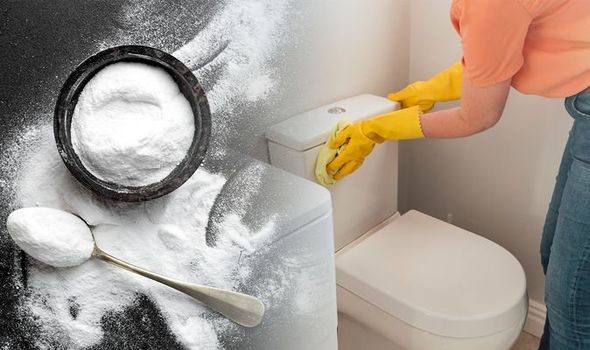“Low VOC” and “No VOC” paints are currently gaining popularity, and it’s for a valid reason. In response to a widespread move towards environmentally conscious products, the paint industry is actively seeking methods to transform traditionally environmentally harmful products into more sustainable options. Yet, like any newly introduced product, these seemingly positive paints have both advantages and disadvantages.
In this article, we’ll clearly explain how low VOC paints work and also list the advantages and disadvantages you should be aware of before making a purchase decision.
Table of contents
- What Are Low-VOC Paints?
- Low-VOC Paints Vs. Regular Paint
- What Are The Advantages Of Low VOC Paints?
- Disadvantages Of Low VOC Paints
- How Does Low-VOC Paint Work?
- Are Low VOC Paints Worth The Money?
- What Is The Difference Between VOC and Low VOC?
- FAQs On How Does Low-VOC Paint Work
- Conclusion
- References
- We Also Recommend
What Are Low-VOC Paints?

The concept behind “low VOC paint” is quite simple: These paints have a reduced concentration of Volatile Organic Compounds (VOCs) compared to conventional paints. VOCs are substances that can easily turn into vapors or gases and can be harmful if inhaled. These gases are responsible for the typical “fresh paint” scent that is often noticeable when the paint is still wet.
While brief exposure to the smell of fresh paint is generally not harmful, regularly breathing in VOCs can pose various health risks. In the short term, individuals may experience nausea. Over the long term, VOC exposure can harm nasal passages
Low-VOC Paints Vs. Regular Paint
Numerous paint manufacturers have entered the market with “low VOC” paints, which are essentially paints containing minimal or no Volatile Organic Compounds. Nevertheless, it’s crucial to understand that the label “low VOC” doesn’t necessarily imply absolute safety or the absence of VOCs.
In reality, there is no established quantitative threshold defining what qualifies as low VOC paint. Therefore, it’s more accurate to interpret the term as indicating “fewer VOCs than usual.”
SEE ALSO: How Does Coffee Makers Work? In few Easy Steps
What Are The Advantages Of Low VOC Paints?
There are various benefits to using Low / No VOC paints, including the obvious health and environmental benefits:
1. Environmentally friendly
As previously stated, VOCs pose a threat to the environment. Consequently, a paint with reduced VOC levels emerges as a more environmentally friendly and sustainable option compared to conventional paints. Nevertheless, it’s important to note that low VOC paints are not entirely without risk, as VOCs represent just one among several toxic compounds that may be present in paints.
2. Minimal Odor
The reduced odor is a significant benefit that distinguishes low-VOC paints from traditional ones. After painting your industrial or commercial facility, the lingering smell may persist for days if you use conventional paints.
This can be off-putting and even harmful to employees, as well as clients who visit your facility. Reduced odor is a big benefit to low VOC paints.
3. Low Toxic Emissions
Opting for low VOC paint proves more advantageous for interior painting projects. Indoor air quality tends to be more compromised compared to outdoor air, primarily due to toxic emissions released by regular paint.
In contrast, low VOC paint emits minimal toxins, significantly reducing its impact on the air quality within a room. The low VOC paint is either odorless or has a very faint smell, contributing to a decrease in allergy-causing pollutants. Consequently, individuals, including family members with chronic allergies, will find it more comfortable and healthier to be inside a room painted with low VOC paint.
Disadvantages Of Low VOC Paints
Here are a few disadvantages of low VOC paints:
1. Increased Cost
Like any product, the latest innovation often comes with a higher price tag. Historically, low VOC paints have been more expensive than traditional paints, likely due to the additional processes involved in reducing VOC levels.
2. Reduced Durability
While low VOC and no VOC paints are relatively recent developments, a common observation is that the diminished VOC content often leads to a decrease in paint longevity. Consequently, you may find yourself needing to reapply the paint more frequently, resulting in additional expenses.
3. Extra Solvents and Chemicals
A majority of low VOC paints available today incorporate extra solvents and chemicals for various purposes. However, these additional substances may have toxic effects on both individuals and the environment, counteracting the intended benefits of choosing low-VOC paint.
SEE ALSO: How to Resurface a Bathtub | Full Guide
How Does Low-VOC Paint Work?
Low-VOC (Volatile Organic Compounds) paint is formulated to minimize the release of harmful chemicals into the air, providing a more environmentally friendly and health-conscious alternative to traditional paints. Here’s how low-VOC paint works:
- Reduced VOC Content:
- The primary characteristic of low-VOC paint is its significantly reduced VOC content compared to traditional paints. VOCs are chemicals that can evaporate into the air as the paint dries, contributing to indoor and outdoor air pollution.
- Alternative Solvents:
- Low-VOC paints use alternative solvents and binders that have lower vapor pressures and are less prone to turning into harmful gases. These alternative ingredients help maintain the integrity of the paint while minimizing the release of toxic compounds.
- Water-Based Formulations:
- Many low-VOC paints are water-based rather than oil-based. Water serves as a carrier for pigments and binders, reducing the need for high levels of VOC-containing solvents. This makes water-based low-VOC paints less harmful to both indoor air quality and the environment.
- Advanced Formulations:
- Advances in paint technology have led to the development of low-VOC formulations that retain the performance and durability associated with traditional paints. These advancements address concerns about the longevity and effectiveness of low-VOC paint.
- Improved Indoor Air Quality:
- By using low-VOC paint, the concentration of harmful airborne chemicals is minimized during and after the painting process. This contributes to improved indoor air quality, making it a preferable option for residential and commercial spaces.
SEE ALSO: How Does Plasma Cutters Work?
Are Low VOC Paints Worth The Money?
After delving into the details, we arrive at the ultimate question: Is it worthwhile to invest in low VOC paints? The response largely hinges on the intended use of the paint, your budget, and various other considerations.
Nevertheless, there are some conventional guidelines to bear in mind when contemplating the purchase of low VOC paints:
- Buy a low VOC paint with less than 5g VOC
- Buy paints labeled “non-toxic” or “no toxic solvent added”
- Avoid cheap knock-offs. Cheaper does not always mean you’ve found a bargain.
- Test the paint. Only buy a small sample, and ensure the paint works well on your facility surface
So, is the cost of low VOC paints justified? It’s uncertain. If you have the financial flexibility to explore, low VOC paints show significant promise and represent a more sustainable choice for the future. Nonetheless, there is still a considerable amount of refinement required before we can confidently assert that low VOC paints are the optimal choice for every painting project.
READ ALSO: How Does Dryer Vent Cleaning Work
What Is The Difference Between VOC and Low VOC?
As the name describes, “no VOC” and “low VOC” paints sound like they are better than “VOC” paints; however, the Environmental Protection Agency states it can only regulate VOC-containing paints if they are photochemically reactive, meaning when they enter the atmosphere, they turn into ozone, which causes smog.3
“Some products that are labeled as “no VOC” or “low VOC” can contain volatile organic chemicals that are toxic, sometimes at high levels,” according to the EPA. “While it is probably prudent to use products with lower VOC levels, it does not assure that the products are any better (and they may even be worse) than products with higher VOC levels.”3
The bottom line is the EPA can regulate or ban VOC paints that contribute to photochemical smog, but other paints labeled as no-VOC or low-VOC remain on the market and may contain toxic elements. So, if toxicity is your most significant concern, instead of looking at VOC contents, look for paints labeled “non-toxic” or “natural paint.” These specialty paints can be harder to find, and you may have to order them online from alternative paint companies.
FAQs On How Does Low-VOC Paint Work
VOC stands for Volatile Organic Compounds.
Low-VOC paint contains a reduced amount of Volatile Organic Compounds compared to traditional paints. VOCs are chemicals that can vaporize into the air, potentially causing health and environmental concerns.
Low-VOC paints are considered more environmentally friendly because they release fewer harmful compounds into the air, minimizing air pollution and reducing the overall environmental impact.
While low-VOC paints have significantly reduced VOC levels, they may not be entirely VOC-free. It’s essential to check the product specifications for the specific VOC content.
Conclusion
If your goal is cost savings and you prioritize paint that is easy to apply, smooth, and has longer durability, choose standard VOC paint.
On the other hand, if environmental impact, sensitivity to odor, and potential health issues are your priorities, you will probably be more satisfied with no or low-VOC paints. However, if health and environmental factors are your utmost concerns, then consider opting for “non-toxic” or “natural” paint instead.
References
- dulux.com.au – Low VOC paints
- thespruce.com – VOC Paint vs No-VOC Paint Comparison Guide





